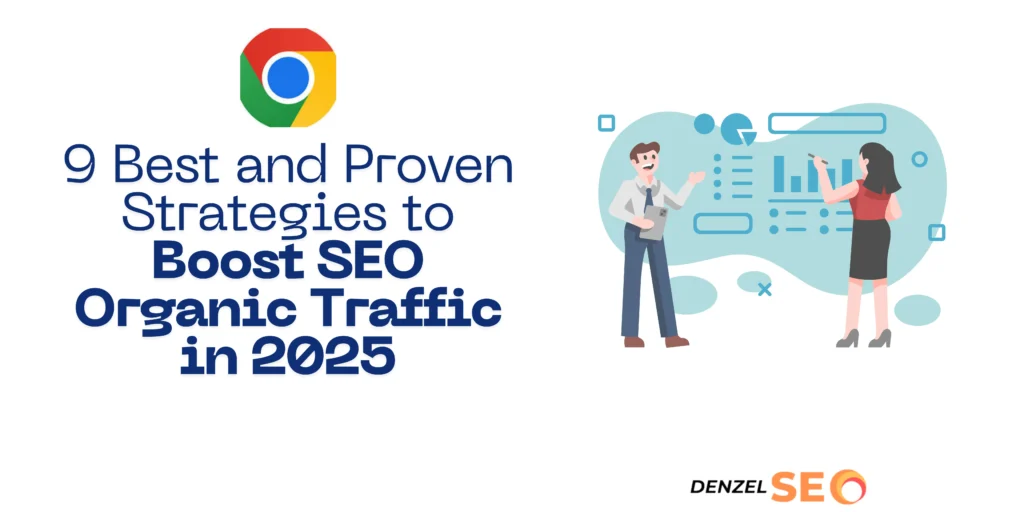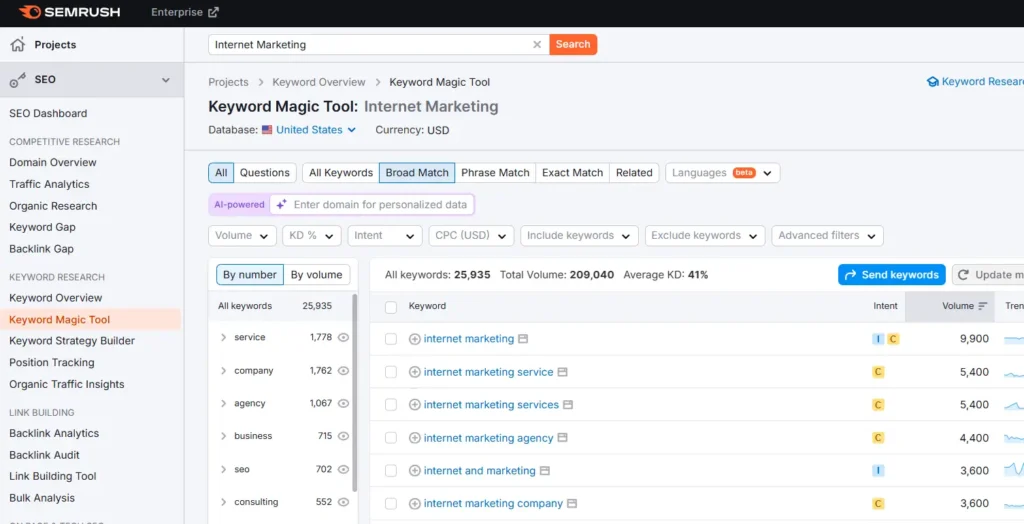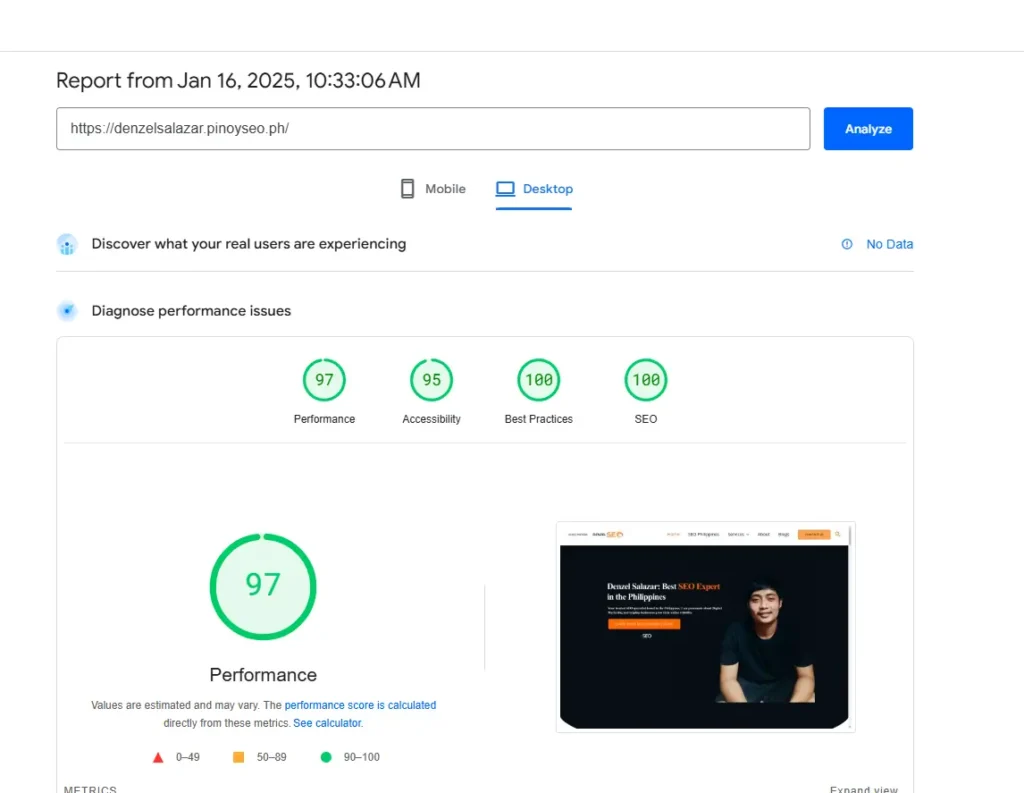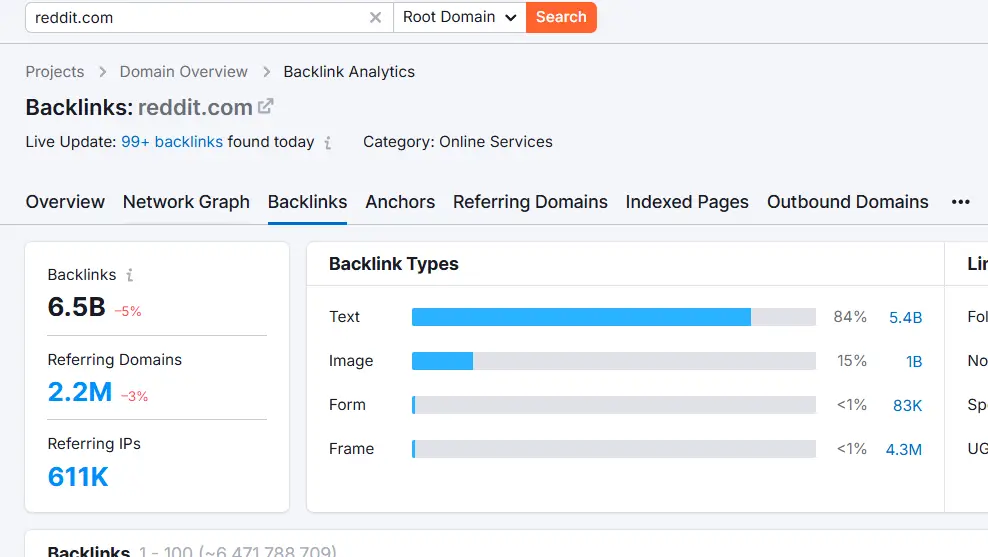9 Best and Proven Strategies to Boost SEO Organic Traffic 2025
Jan 17, 2025 by Denzel Salazar

Unlock the Full Potential of Your Website with These SEO Techniques
Search engines drive the majority of organic traffic, making SEO an essential tool for online success. Websites thrive when they deliver valuable, user-centered content optimized for visibility. Understanding and leveraging SEO strategies can significantly enhance your online visibility and website performance. Here are the 9 best-proven methods to maximize your organic traffic.
Perform Extensive Keyword Analysis

Keyword research is still a critical starting point for any SEO strategy. It involves identifying the terms and phrases your audience is searching for and targeting them effectively.
Actionable Insights:
The SEO ecosystem includes a spectrum of roles:
- Entry-level positions (e.g., Analysts) focus on execution.
- Mid-tier roles (e.g., Managers) oversee campaigns and coordinate teams.
- Senior roles (e.g., Leads and Directors) emphasize strategy and high-level decisions.
Optimize On-Page Elements

On-page SEO ensures your website structure and content are optimized for both humans and search engines.
Best Practices:
- Title Tags: Craft compelling and keyword-rich titles within 60 characters.
- Meta Descriptions: Use NLP-enhanced tools to craft descriptions that improve CTR (click-through rate).
- Header Tags (H1, H2, etc.): Organize content hierarchically for readability.
- Semantic Structuring: Use header tags (H1, H2) to improve readability for both users and search engines.
- Alt Image Text: Properly putting alt text makes the image more accessible to people who can’t see it, such as those with visual impairments, or low vision. And it can also help search engines understand what the image is all about.
- Internal Linking: Guide users through your website while boosting SEO rankings.
- Leverage AI: Use AI to assist you in making good and seamless content. Another thing to try is to Use NLP (Natural Language Processing) for your content. It’s worth it.
Pro Tip: Keep URLs short and include primary keywords to enhance visibility.
Improve Website Loading Speed

A slow-loading site frustrates users and negatively impacts your rankings. Speed influences user experience (UX) and search engine rankings. Google’s algorithms prioritize fast-loading websites for better mobile experiences.
Steps to Optimize Speed:
- Compress images using tools like TinyPNG or ImageOptim.
- Minify CSS, HTML, and JavaScript files.
- Implement lazy loading for media-heavy pages.
- Use a Content Delivery Network (CDN) to distribute your site globally.
Did You Know? Google considers page speed a ranking factor, especially for mobile-first indexing.
Create High-Quality, Relevant Content
Content is the cornerstone of SEO. To engage users and rank well, your content must be valuable, engaging, and relevant. Google’s NLP models like BERT evaluate content relevance and context, rewarding high-value pages.
Content Creation Tips:
- Conduct topic modeling to address related queries in your niche.
- Create evergreen content that remains relevant over time.
- Use AI tools to extract trending subtopics
- Focus on E-E-A-T (Experience, Expertise, Authoritativeness, Trustworthiness) principles in content creation
Remember: Quality always trumps quantity. A few high-value pieces will outperform multiple generic articles.
Utilize Link Building Tactics

Backlinks are one of the most influential factors for SEO rankings, meaning getting from high-authority domains can get your site good traffic and trust.
How to Build Quality Links:
- Reach out to reputable websites for guest blogging opportunities.
- Create shareable resources like guides, case studies, or infographics.
- Use tools like Moz or Ahrefs to monitor and disavow harmful backlinks.
- Conduct a semantic link gap analysis to identify backlink opportunities.
- Outreach to authority sites for guest blogging.
Fun Fact: A single link from a high-authority site can outperform dozens from low-quality sources.
Leverage Social Media for SEO
Social signals amplify your content’s reach, improving indirect ranking factors like brand mentions and click-throughs
Social Media Tactics:
- Share your content consistently on platforms like LinkedIn, Facebook, and Instagram.
- Prioritize platforms that is trending, like Youtube.
- Encourage user-generated content for authentic backlinking
- Add social sharing buttons to your site to encourage user-driven promotion.
Bonus: Viral social media posts can lead to organic backlinks from news sites and blogs.
Focus on Mobile Optimization
Google’s mobile-first indexing emphasizes mobile-friendly designs. Poor mobile usability impacts both rankings and conversions.With more than 60% of searches conducted on mobile, a mobile-friendly site is essential.
Key Tips:
- Use responsive web design to ensure your site adjusts to any screen size.
- Optimize images for faster loading on mobile.
- Ensure buttons and links are easy to click on smaller screens.
- Optimize for voice search with NLP keywords like “how-to” and question-based phrases.
Actionable Insight: Test your site’s mobile usability using Google’s Mobile-Friendly Test tool.
Implement Structured Data and Schema Markup

Structured data enhances your website’s ability to communicate with search engines, enabling rich snippets like star ratings, FAQs, and product prices.
Steps to Get Started:
- Use Schema.org to implement JSON-LD markup on your pages.
- Highlight product details, event schedules, or FAQs for better visibility.
- Test your structured data using Google’s Rich Results Test.
Schema Types to Use:
- FAQ schema for informational content.
- Review schema for product pages.
- Article schema for blogs and news posts.
Why It Matters: Rich snippets improve click-through rates by making your site more attractive on search result pages.
Regularly Analyze and Adjust Your SEO Strategy
SEO is an ongoing process, and regular monitoring is vital for long-term success.
Monitoring Techniques:
- Use Google Analytics to track organic traffic and user behavior.
- Leverage tools like SEMrush to analyze keyword rankings and backlink profiles.
- Conduct monthly SEO audits to fix technical issues and identify new opportunities.
Pro Tip: Adapt to algorithm changes by staying informed and experimenting with different tactics.
Bottomline
Employers should assess:
- Team size and goals
- Budget and resource allocation
- Whether strategy or operations require immediate focus
Implementing these 9 proven strategies will not only boost your organic traffic but also position your website for long-term success this 2025. SEO requires patience and consistent effort, but the results of higher visibility, increased traffic, and better conversions are well worth it. If you need more seo services Check our Site denzelSEO for your business!
FAQS
Increasing organic traffic on social media involves regularly posting engaging content, optimizing your profiles with relevant keywords, using hashtags strategically, and interacting with your audience through comments and direct messages. Additionally, sharing blog posts, infographics, and videos that provide value can drive more traffic to your website.
To boost organic traffic for an eCommerce website, focus on optimizing product descriptions with relevant keywords, improving site speed, using high-quality images, and ensuring mobile responsiveness. Implementing a strong internal linking strategy, creating valuable content through blogs, and utilizing customer reviews can also enhance your SEO efforts.
Some popular tools for checking organic traffic include Google Analytics, SEMrush, Ahrefs, and Moz. These tools provide insights into your website's traffic sources, keyword performance, and overall SEO health, helping you refine your strategies.
A successful SEO strategy involves thorough keyword research, creating high-quality content, optimizing on-page elements, building quality backlinks, and regularly monitoring your performance. It's also crucial to keep up with algorithm updates and adjust your strategy accordingly.
An example of an SEO strategy might include identifying long-tail keywords relevant to your niche, creating detailed blog posts targeting these keywords, optimizing meta tags, and building backlinks through guest posting and partnerships with industry influencers.
While SEO is a long-term strategy, you can see faster results by focusing on low-competition keywords, optimizing existing content, improving site speed, and leveraging content promotion on social media. Additionally, updating outdated content can provide a quick traffic boost.
